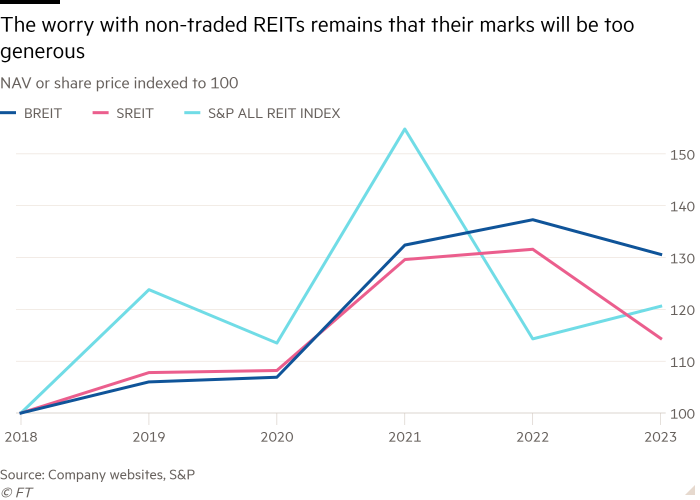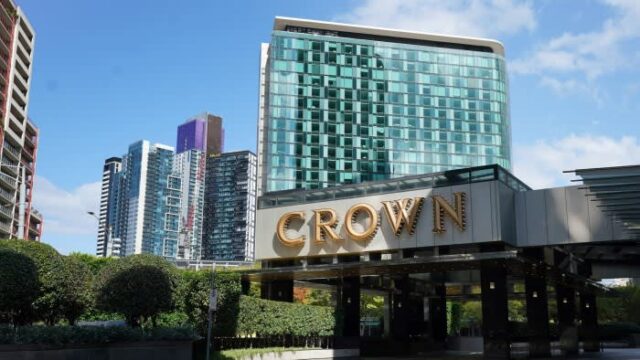Unlock the Editor’s Digest for free
Roula Khalaf, Editor of the FT, selects her favourite stories in this weekly newsletter.
If you can’t get your money out, you better be sure your fund manager knows what they are doing.
Starwood Real Estate Investment Trust (Sreit), a non-traded US property landlord with $10bn in net assets, has had to tap credit lines to meet heavy redemption requests. Shareholders, largely comprised of wealthy individuals, tried to withdraw $1.5bn of shares from Sreit in the first quarter.
Such private Reits usually do not allow more than 5 per cent of the fund’s net asset value to depart in a quarter. Blackstone’s similar $60bn vehicle, Breit, had to throw up its own gates last year.
The conceit of these vehicles is that holders trade near-term liquidity for better investing acumen over the long term. But the spike in interest rates and office values crashing means property funds have rattled antsy holders. Episodic redemption pressures, however, should not distract from the core issue of whether these structures can consistently grow shareholder value.
Non-traded Reits have faced criticism over internally set valuations, even those where third-party experts are used. NAVs for Breit and Sreit did not spike sharply in 2021 but held their value better than public benchmarks in 2022.

In the near-term, the funds need enough liquidity — between rents collected, debt raises and new shareholders buying equity — to fund both the typical 5 per cent dividend yield as well as permitted withdrawals.
Longer term, net asset value has to rise through a combination of accretive new property projects combined with higher rents charged. Blackstone, for example, said the redemption pressure last year stemmed from Asian clients needing cash, not lost confidence in its investing chops: Breit’s office exposure is less than 5 per cent of its portfolio. It has emphasised life science facilities, data centres and warehouses.
All the big alternative asset managers have made non-traded private capital vehicles marketed to retail investors the backbone of growth plans. They argue that individuals need private asset exposure, despite the fact that publicly traded Reits and business development companies invest in the same assets and can be freely sold at any time.
Perhaps long-term assets should not be marked daily in trading markets. But fund redemptions are set off net asset value so there is some check on inflated valuations.
Starwood, with its exposure to Sunbelt residential real estate, appears to have a liquidity crisis that might prevent it from selling emergency equity. Blackstone, on the other hand, inspired enough confidence last year to raise some expensive funding from the University of California.
That cash is merely a bridge, however, buying more time for private equity’s titans to demonstrate they are competent in managing the money of the masses.




